Wines of Chile hosted an online tasting of red blends the other night. I jumped at the opportunity to participate for several reasons. First of all, schedule permitting; I rarely turn down the opportunity to try some new wines. Secondly I’ve been a long term fan of the quality, diversity and value at varying price points that’s coming out of Chile. And last, but certainly not least, it’s fun. The format for this tasting was very similar to one I took part in a few months back, and it’s a system that works. Master Sommelier Fred Dexheimer hosted the proceedings from New York City, The winemakers for each of the eight wines we tasted were gathered in a room in Santiago Chile and the rest of us looked on via the web and submitted questions through a chat function as well as commented back and forth. Additionally most folks Tweeted during the proceedings. Tasting the wines and making notes that night was great. Many of the offerings certainly seemed like they had the structure for at least medium term aging. With that in mind I went back to the wines after 24 hours to see how they evolved. Here are my thoughts on these eight wines, presented in the order we tasted them.
 Valdivieso 2005 Eclat – Fruit for this wine was sourced in the Melozal area of Maule Valley. This offering is a blend of Carignan (56%), Mourvedre (24%), and Syrah (20%). The Carignan vines have over 60 years of age on them. This wine was aged for 12 months in French oak. It has a suggested retail price of $27. This wine, the oldest of the bunch, has a deep garnet hue. Aromas of spice and cocoa are both prominent on the nose. Zingy raspberry flavors are underscored by rhubarb throughout the palate. Minerals and earth notes are both in abundance in the above average finish. This wine is a food lovers dream. The firm acidity makes it a natural partner for a very wide array of matches. I liked this wine so much I wanted to climb inside the bottle and get closer to it. I’d settle for a long weekend with a couple of cases and some delicious food to munch on. Bottom line, this is just an excellent wine that you’re going to want to keep reaching for more of. When I went back to this wine after 24 hours it had held steady and was drinking as well as it had the evening before.
Valdivieso 2005 Eclat – Fruit for this wine was sourced in the Melozal area of Maule Valley. This offering is a blend of Carignan (56%), Mourvedre (24%), and Syrah (20%). The Carignan vines have over 60 years of age on them. This wine was aged for 12 months in French oak. It has a suggested retail price of $27. This wine, the oldest of the bunch, has a deep garnet hue. Aromas of spice and cocoa are both prominent on the nose. Zingy raspberry flavors are underscored by rhubarb throughout the palate. Minerals and earth notes are both in abundance in the above average finish. This wine is a food lovers dream. The firm acidity makes it a natural partner for a very wide array of matches. I liked this wine so much I wanted to climb inside the bottle and get closer to it. I’d settle for a long weekend with a couple of cases and some delicious food to munch on. Bottom line, this is just an excellent wine that you’re going to want to keep reaching for more of. When I went back to this wine after 24 hours it had held steady and was drinking as well as it had the evening before.
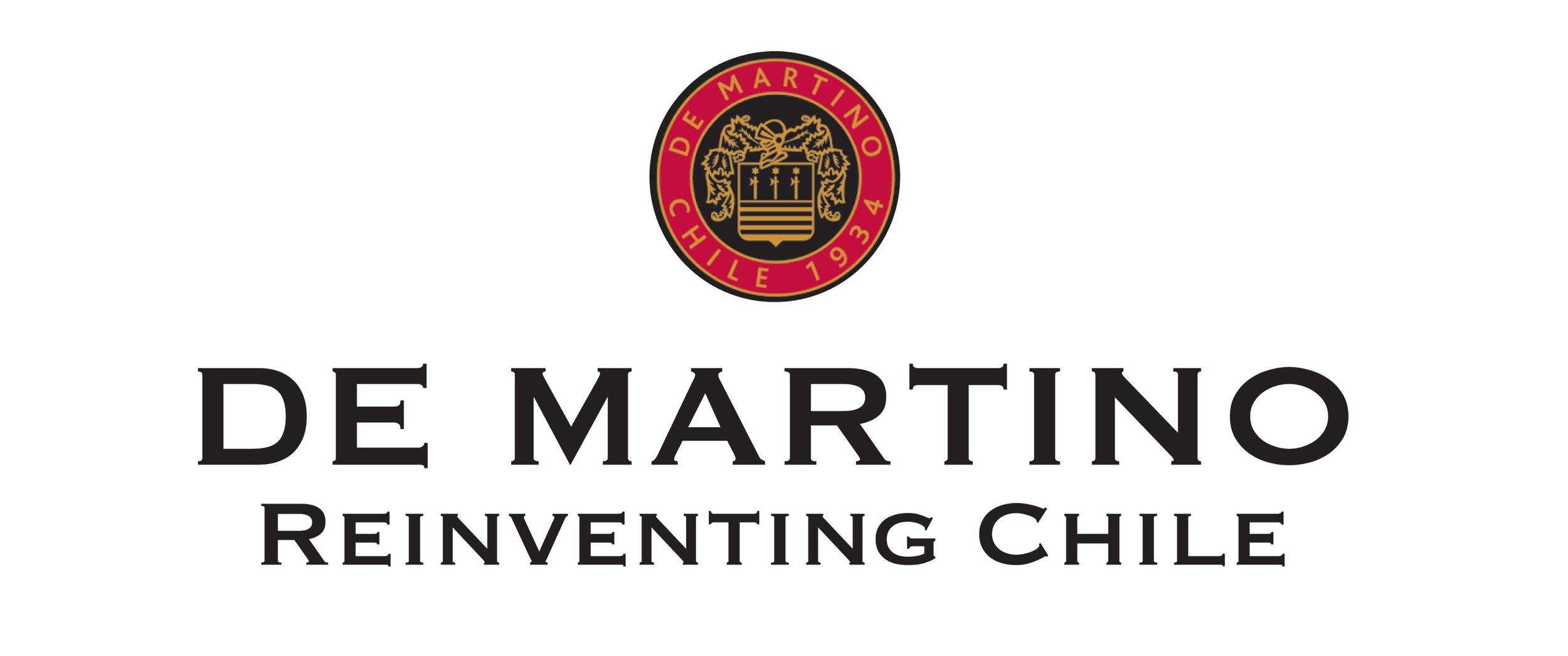 De Martino 2006 “Las Cruces” Single Vineyard Old Bush Vines – Fruit for this wine is from a single vineyard in Cachapoal Valley. This offering is a blend of Malbec (66%) and Carmenère (34%); there are also very low amounts of some other varieties. This wine was aged in French oak for 14 months. It has a suggested retail price of $45. A hint of mint emerges in the nose of this wine. The palate is layered and remarkably restrained for a blend of predominately Malbec and Carmenère. That said when re-tasting it after 24 hours it was significantly more expressive. The red fruits, tinged by hints of darker black fruits were more apparent on day two. The finish which has very good length shows off some sour red fruit elements and continued spice. This wine is remarkably smooth, refined and elegant. In short it’s Grace in a bottle. Delicious now, particularly with food, it should age well for 8 or more years. Pair this with hearty foods for memorable results.
De Martino 2006 “Las Cruces” Single Vineyard Old Bush Vines – Fruit for this wine is from a single vineyard in Cachapoal Valley. This offering is a blend of Malbec (66%) and Carmenère (34%); there are also very low amounts of some other varieties. This wine was aged in French oak for 14 months. It has a suggested retail price of $45. A hint of mint emerges in the nose of this wine. The palate is layered and remarkably restrained for a blend of predominately Malbec and Carmenère. That said when re-tasting it after 24 hours it was significantly more expressive. The red fruits, tinged by hints of darker black fruits were more apparent on day two. The finish which has very good length shows off some sour red fruit elements and continued spice. This wine is remarkably smooth, refined and elegant. In short it’s Grace in a bottle. Delicious now, particularly with food, it should age well for 8 or more years. Pair this with hearty foods for memorable results.
 Estampa 2008 Gold Assemblage Carmenère – The fruit for this offering was sourced primarily at their Marchigue estate near the Pacific Ocean. This wine is a blend of Carmenère (57%), Cabernet Sauvignon (23%), Cabernet Franc (12%) and Petit Verdot (8%). This selection has a suggested retail price of $22. The first impression of this wine is the fresh fruit aromas that waft from the nose with conviction. They’re underscored by spice and a touch of herb. Throughout the palate loads of berry fruit flavors emerge and play key roles in what is a very expressive, multi-layered wine. Both earth and espresso notes come out to play in force on the lengthy and persistent finish. Re-tasting this the second day showcased how this wine can really open up with some air and its flavors become even more animated than before. This blend from Estampa has the structure and stuffing to age gracefully for a dozen years at minimum; in short it’s a baby today. More impressive, at $22 this wine is an outright steal. This would be an excellent choice to put away a case of to watch evolve over time. This is a real knockout. If you drink it now decant it for 3 hours to get the most out of it.
Estampa 2008 Gold Assemblage Carmenère – The fruit for this offering was sourced primarily at their Marchigue estate near the Pacific Ocean. This wine is a blend of Carmenère (57%), Cabernet Sauvignon (23%), Cabernet Franc (12%) and Petit Verdot (8%). This selection has a suggested retail price of $22. The first impression of this wine is the fresh fruit aromas that waft from the nose with conviction. They’re underscored by spice and a touch of herb. Throughout the palate loads of berry fruit flavors emerge and play key roles in what is a very expressive, multi-layered wine. Both earth and espresso notes come out to play in force on the lengthy and persistent finish. Re-tasting this the second day showcased how this wine can really open up with some air and its flavors become even more animated than before. This blend from Estampa has the structure and stuffing to age gracefully for a dozen years at minimum; in short it’s a baby today. More impressive, at $22 this wine is an outright steal. This would be an excellent choice to put away a case of to watch evolve over time. This is a real knockout. If you drink it now decant it for 3 hours to get the most out of it.
 Montes 2008 Limited Selection Cabernet Sauvignon Carmenère – Fruit for this blend was sourced at the Montes La Finca Estate in Apalta Valley. This offering is a blend of Cabernet Sauvignon (70%), and Carmenère (30%). This wine spent six months in American oak. It has a suggested retail price of $15. The dark hue of this wine struck me as it was decidedly more intense in color than the previous three. The nose is filled with heady black cherry and copious quantities of intoxicating plum pudding spice. Those characteristics continue through the palate where red and black cherry flavors play a significant role. The palate is quite layered and while everything is in proportion the flavors are intense, just short of explosive. Minerals such as graphite in addition to other elements like earth and continued black fruits dominate the solid finish. This wine surprised me; I didn’t expect it to be better the next day. In fact I thought this was a candidate to taste a little sluggish on day 2, boy was I wrong. The openness of the flavors really ratcheted up several notches after 24 hours. For $15 this wine offers tons of drinking pleasure. Enjoy it over the next 3-4 years to get the most of its exuberant youth.
Montes 2008 Limited Selection Cabernet Sauvignon Carmenère – Fruit for this blend was sourced at the Montes La Finca Estate in Apalta Valley. This offering is a blend of Cabernet Sauvignon (70%), and Carmenère (30%). This wine spent six months in American oak. It has a suggested retail price of $15. The dark hue of this wine struck me as it was decidedly more intense in color than the previous three. The nose is filled with heady black cherry and copious quantities of intoxicating plum pudding spice. Those characteristics continue through the palate where red and black cherry flavors play a significant role. The palate is quite layered and while everything is in proportion the flavors are intense, just short of explosive. Minerals such as graphite in addition to other elements like earth and continued black fruits dominate the solid finish. This wine surprised me; I didn’t expect it to be better the next day. In fact I thought this was a candidate to taste a little sluggish on day 2, boy was I wrong. The openness of the flavors really ratcheted up several notches after 24 hours. For $15 this wine offers tons of drinking pleasure. Enjoy it over the next 3-4 years to get the most of its exuberant youth.
 Maquis 2006 Lien – The fruit for this wine was sourced at the Maquis vineyards which are between two rivers. This vintage is a blend of Syrah (42%), Carmenère (30%), Cabernet Franc (12%), Petit Verdot (9%), and Malbec (7%). This wine was aged in all French oak. It has a suggested retail price of $19. Black fruits and spice are the dominant characteristics of the nose. The palate is loaded with juicy, red and black fruit flavors. Chocolate notes emerge as well along with spice elements. While the fruit is fresh and intense it never comes close to nudging over the top. In fact all of the elements come together lending themselves towards a wine that has both new and old world flourishes. I find that Lien has lots of wow factor. It’s going to have smart crowd appeal. It has the openness to appeal to the masses and the structure and complexity to keep more seasoned wine lovers happy. For $19 this wine is a very solid value. On the second day I found that it held its own quite nicely. Not built for long term aging, but it’ll drink well for five years. Having had this wine several times over the last few vintages, I can say that the quality and value have remained consistent.
Maquis 2006 Lien – The fruit for this wine was sourced at the Maquis vineyards which are between two rivers. This vintage is a blend of Syrah (42%), Carmenère (30%), Cabernet Franc (12%), Petit Verdot (9%), and Malbec (7%). This wine was aged in all French oak. It has a suggested retail price of $19. Black fruits and spice are the dominant characteristics of the nose. The palate is loaded with juicy, red and black fruit flavors. Chocolate notes emerge as well along with spice elements. While the fruit is fresh and intense it never comes close to nudging over the top. In fact all of the elements come together lending themselves towards a wine that has both new and old world flourishes. I find that Lien has lots of wow factor. It’s going to have smart crowd appeal. It has the openness to appeal to the masses and the structure and complexity to keep more seasoned wine lovers happy. For $19 this wine is a very solid value. On the second day I found that it held its own quite nicely. Not built for long term aging, but it’ll drink well for five years. Having had this wine several times over the last few vintages, I can say that the quality and value have remained consistent.
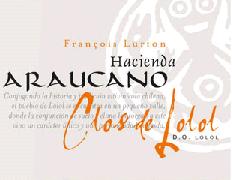 Hacienda Araucano 2008 Clos de Lolol – Fruit for this effort was sourced in the Lolol Valley. This offering is a blend of Syrah (31%), Cabernet Franc (29%), Cabernet Sauvignon (23%), and Carmenère (17%). The Cabernet Sauvignon and Carmenère vines are some of the last vines in the world not to have known Phylloxera. This wine has a suggested retail price of $23. Aromas of fleshy plum and chocolate sauce are both part of the nose. Cherry comes out in droves on the palate as well as loads of spice, black pepper in particular. Kirsch liqueur emerges on the finish along with flourishes of sour berry. This wine is layered and polished. It has firm but yielding tannins and solid acidity. It drinks well on its own but will be a terrific partner to full flavored foods. On the second day this wine had opened up just a touch more. Mostly it had held steady and showed again a day later that buying this wine for $23 is petty larceny. It stands as one of the two or three best values of these 8 in a tasting loaded with wines that over deliver.
Hacienda Araucano 2008 Clos de Lolol – Fruit for this effort was sourced in the Lolol Valley. This offering is a blend of Syrah (31%), Cabernet Franc (29%), Cabernet Sauvignon (23%), and Carmenère (17%). The Cabernet Sauvignon and Carmenère vines are some of the last vines in the world not to have known Phylloxera. This wine has a suggested retail price of $23. Aromas of fleshy plum and chocolate sauce are both part of the nose. Cherry comes out in droves on the palate as well as loads of spice, black pepper in particular. Kirsch liqueur emerges on the finish along with flourishes of sour berry. This wine is layered and polished. It has firm but yielding tannins and solid acidity. It drinks well on its own but will be a terrific partner to full flavored foods. On the second day this wine had opened up just a touch more. Mostly it had held steady and showed again a day later that buying this wine for $23 is petty larceny. It stands as one of the two or three best values of these 8 in a tasting loaded with wines that over deliver.
 Emiliana 2007 Coyam – Fruit for this wine was sourced in Colchagua Valley. This offering is a blend of Syrah (38%), Cabernet Sauvignon (21%), Carmenère (21%), Merlot 17%), Petit Verdot (2%) and Mourvedre (1%). It was aged for 13 months in a combination of French (80%) and American (20%) oak. This wine has a suggested retail price of $29. A touch of eucalyptus emerges from the nose of this 2007 blend. It’s joined by prominent chocolate covered cherry aromas. Cherry and blackberry flavors along with toasty oak notes are all out with varying degrees of intensity through the palate. An absolute avalanche of dusty dark chocolate emerges on the finish along with earth and chicory notes. Firm tannins yield with some air. This wine is well structured for the long haul. Of the 8 wine in this Chilean Blends tasting Coyam was the most dramatically different the 2nd day. It was quite delicious on day one, but in retrospect akin to a shy child who needs some time to open up and get comfortable. On the second day the flavors just exploded on the palate and lingered on the back of the throat in a persistent finish that left an impression long after the last sip. Coyam is a very impressive wine that I’d love to re-taste 5-10 years down the road to see its evolution.
Emiliana 2007 Coyam – Fruit for this wine was sourced in Colchagua Valley. This offering is a blend of Syrah (38%), Cabernet Sauvignon (21%), Carmenère (21%), Merlot 17%), Petit Verdot (2%) and Mourvedre (1%). It was aged for 13 months in a combination of French (80%) and American (20%) oak. This wine has a suggested retail price of $29. A touch of eucalyptus emerges from the nose of this 2007 blend. It’s joined by prominent chocolate covered cherry aromas. Cherry and blackberry flavors along with toasty oak notes are all out with varying degrees of intensity through the palate. An absolute avalanche of dusty dark chocolate emerges on the finish along with earth and chicory notes. Firm tannins yield with some air. This wine is well structured for the long haul. Of the 8 wine in this Chilean Blends tasting Coyam was the most dramatically different the 2nd day. It was quite delicious on day one, but in retrospect akin to a shy child who needs some time to open up and get comfortable. On the second day the flavors just exploded on the palate and lingered on the back of the throat in a persistent finish that left an impression long after the last sip. Coyam is a very impressive wine that I’d love to re-taste 5-10 years down the road to see its evolution.
 Casas del Bosque 2007 Gran Estate Selection Private Reserve – Fruit for this release was sourced in Casablanca Valley. This offering is a blend of Syrah (61%), Merlot (26%), and Pinot Noir (13%). This wine spent 22 months in 100% new French oak. It has a suggested retail price of $50. This wine has the deepest, darkest hue of the bunch. Aromas of dark fruit such as blueberry and huckleberry fill the nose. The Pinot Noir in this blend really makes its presence known in the palate; there’s a lighter bodied feel it adds, which belies the weight and heft this overall wine really has. Licorice and baker’s spice flavors join the compote of dark fruit flavors that make up this wines intense, brooding middle. Chewy tannins, and lots of juicy, sumptuous fruit flavors are part of a lengthy finish that has layer after layer of flavor. This wine was a little closed out of the chute and really needed air to open up. On day 2 it had opened up significantly; but quite frankly it tasted like it still had plenty to give. It’s an impressive wine that should definitely be decanted if you drink it over the next few years. I expect this wine to improve in the bottle over the next decade or so and to drink well for several years after that.
Casas del Bosque 2007 Gran Estate Selection Private Reserve – Fruit for this release was sourced in Casablanca Valley. This offering is a blend of Syrah (61%), Merlot (26%), and Pinot Noir (13%). This wine spent 22 months in 100% new French oak. It has a suggested retail price of $50. This wine has the deepest, darkest hue of the bunch. Aromas of dark fruit such as blueberry and huckleberry fill the nose. The Pinot Noir in this blend really makes its presence known in the palate; there’s a lighter bodied feel it adds, which belies the weight and heft this overall wine really has. Licorice and baker’s spice flavors join the compote of dark fruit flavors that make up this wines intense, brooding middle. Chewy tannins, and lots of juicy, sumptuous fruit flavors are part of a lengthy finish that has layer after layer of flavor. This wine was a little closed out of the chute and really needed air to open up. On day 2 it had opened up significantly; but quite frankly it tasted like it still had plenty to give. It’s an impressive wine that should definitely be decanted if you drink it over the next few years. I expect this wine to improve in the bottle over the next decade or so and to drink well for several years after that.
Several factors should become obvious to anyone tasting these wines side by side. There are a host of delicious blended wines being produced in Chile from a diverse and ever expanding array of grapes. Some of these grapes are associated with Chile in people’s minds, but many are not, and provide a real sense of discovery. The quality across the board, regardless of price point can be quite staggering. This is particularly obvious when you take into account what the same money buys you in wine from numerous other regions. And while I’m mentioning value let me make it clear I don’t mean Entry level $6 bottles. Value is important regardless of what you spend on a wine. I’m a firm believer that a $100 bottle of wine can be every bit as significant of a value as a $10 bottle. To me, it’s always relative to what else you can buy for that $100, or that $20 for that matter. This tasting of Chilean blends was a microcosm of that idea. The suggested retail prices of these 8 wines ranged from $15 to $50 which is a decent sized gulf for many folks. Perhaps most impressive, that while it certainly varied, each of the 8 wines delivers quality well over normal expectation for the price-point. If you haven't considered Chilean Wines recently, now is a good time to jump in. There are many delicious offerings to try, regardless of your budget.
 Benessere Vineyards is a boutique sized winery in Napa Valley that's also a treasure to those lucky enough to discover it. They produce varietally correct wines sourced from their estate vineyards. The fact that they lean towards Italian varietals such as Sangiovese and Pinot Grigio makes them somewhat unique in the valley. Their property is beautiful and the wines are by and large delicious and fairly priced. Today I’ll look at the current release of Phenomenon, their red Super Tuscan inspired blend.
The Benessere Vineyards 2007 Phenomenon is a proprietary blend. This Napa Valley wine was made entirely from fruit sourced at their Estate Vineyard in St. Helena. Cabernet Sauvignon (49%), Sangiovese (38%), Merlot (11%), and Syrah (2%) were fermented and barrel aged separately. They were then assembled and barrel aged for two additional years prior to release. Just fewer than 500 cases of this offering were produced and it has a suggested retail price of $50.
Benessere Vineyards is a boutique sized winery in Napa Valley that's also a treasure to those lucky enough to discover it. They produce varietally correct wines sourced from their estate vineyards. The fact that they lean towards Italian varietals such as Sangiovese and Pinot Grigio makes them somewhat unique in the valley. Their property is beautiful and the wines are by and large delicious and fairly priced. Today I’ll look at the current release of Phenomenon, their red Super Tuscan inspired blend.
The Benessere Vineyards 2007 Phenomenon is a proprietary blend. This Napa Valley wine was made entirely from fruit sourced at their Estate Vineyard in St. Helena. Cabernet Sauvignon (49%), Sangiovese (38%), Merlot (11%), and Syrah (2%) were fermented and barrel aged separately. They were then assembled and barrel aged for two additional years prior to release. Just fewer than 500 cases of this offering were produced and it has a suggested retail price of $50.
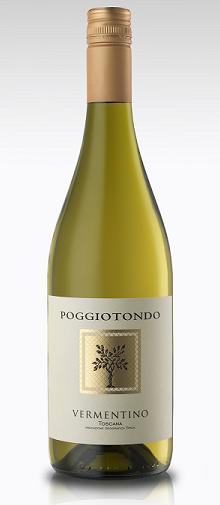 The Poggiotondo 2011 Vermentino IGT was produced from fruit sourced in the winery’s home region of Tuscany. This offering is 100% Vermentino. Fermentation took place in a combination of stainless steel (85%) and French oak (15%). Their estate which is over 123 acres has both vines and olive trees on it. After fermentation this wine saw two months of contact with the lees during aging. This wine has a suggested retail price of $20. Lemon zest, hazelnut and mango aromas are all prevalent on the nose of this Vermentino. Bartlett pear and yellow delicious apple flavors are on display throughout the palate along with hints of grapefruit. An impressive amount of minerality is in evidence throughout, particularly on the finish which has excellent length. The Poggiotondo Vermentino has lively acidity and nice structure; it's a pleasure to drink on its own but it’s truly made to pair with food. I enjoyed it alongside a roasted beet salad with goat cheese which worked perfectly. This wine is best served a couple of degrees warmer than the average white wine. That really allows it to open up and show its true charms.
The Poggiotondo 2011 Vermentino IGT was produced from fruit sourced in the winery’s home region of Tuscany. This offering is 100% Vermentino. Fermentation took place in a combination of stainless steel (85%) and French oak (15%). Their estate which is over 123 acres has both vines and olive trees on it. After fermentation this wine saw two months of contact with the lees during aging. This wine has a suggested retail price of $20. Lemon zest, hazelnut and mango aromas are all prevalent on the nose of this Vermentino. Bartlett pear and yellow delicious apple flavors are on display throughout the palate along with hints of grapefruit. An impressive amount of minerality is in evidence throughout, particularly on the finish which has excellent length. The Poggiotondo Vermentino has lively acidity and nice structure; it's a pleasure to drink on its own but it’s truly made to pair with food. I enjoyed it alongside a roasted beet salad with goat cheese which worked perfectly. This wine is best served a couple of degrees warmer than the average white wine. That really allows it to open up and show its true charms. Recently, I had the opportunity to taste a number of
Recently, I had the opportunity to taste a number of  and each vintage the finest lots are selected to assemble The Puzzle. As such the varietal composition can vary greatly from one year to the next. The current release is a blend of Merlot (42%), Cabernet Sauvignon (36%), Cabernet Franc (14%), Petit Verdot (6%) and Malbec (2%). Aging occurred over 20 months in entirely French oak. This wine has a suggested retail price of $80.
and each vintage the finest lots are selected to assemble The Puzzle. As such the varietal composition can vary greatly from one year to the next. The current release is a blend of Merlot (42%), Cabernet Sauvignon (36%), Cabernet Franc (14%), Petit Verdot (6%) and Malbec (2%). Aging occurred over 20 months in entirely French oak. This wine has a suggested retail price of $80.
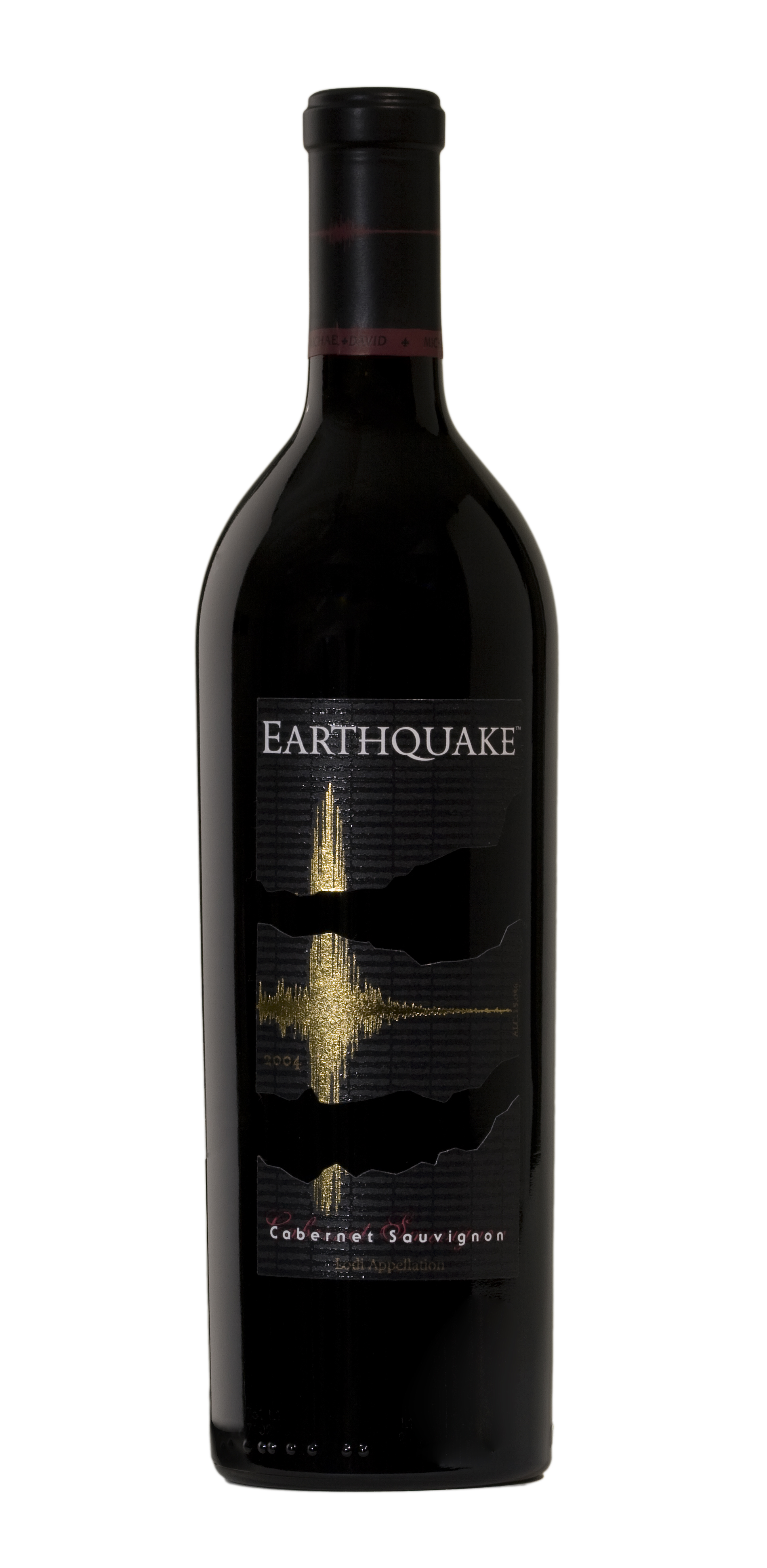 Michael David Winery makes a wide array of offerings from fruit sourced in their native region of Lodi California. Their focus is the production of engaging, fruit forward wines loaded with flavor and curb appeal. The offerings the make are widely available across the country at a cross section of budget friendly prices. Today I’ll look at two of their current release offerings.
The Michael David Winery 2010 Incognito White was produced using fruit sourced in the Lodi California Appellation. This wine is a blend of Viognier (63%), Chardonnay (21%),Muscat (7%), Sauvignon Blanc (5%) and Roussanne (4%). Incognito White was fermented and aged in stainless steel; this offering had no oak contact. The suggested retail price for this widely available wine is $18.
Michael David Winery makes a wide array of offerings from fruit sourced in their native region of Lodi California. Their focus is the production of engaging, fruit forward wines loaded with flavor and curb appeal. The offerings the make are widely available across the country at a cross section of budget friendly prices. Today I’ll look at two of their current release offerings.
The Michael David Winery 2010 Incognito White was produced using fruit sourced in the Lodi California Appellation. This wine is a blend of Viognier (63%), Chardonnay (21%),Muscat (7%), Sauvignon Blanc (5%) and Roussanne (4%). Incognito White was fermented and aged in stainless steel; this offering had no oak contact. The suggested retail price for this widely available wine is $18.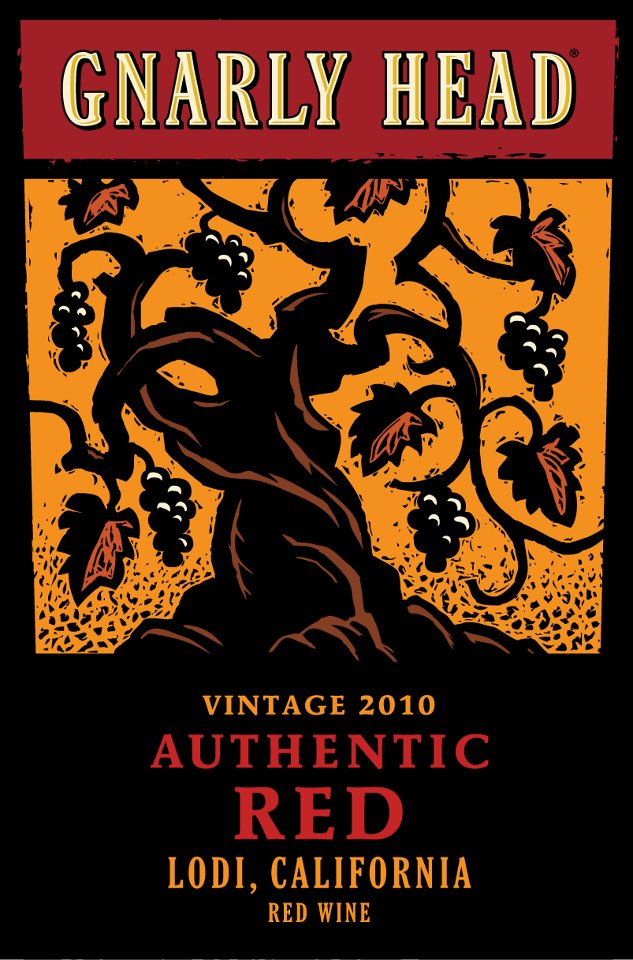 Their Old Vine Zin remains the best known selection from
Their Old Vine Zin remains the best known selection from  The 2007 vintage of Luce from
The 2007 vintage of Luce from 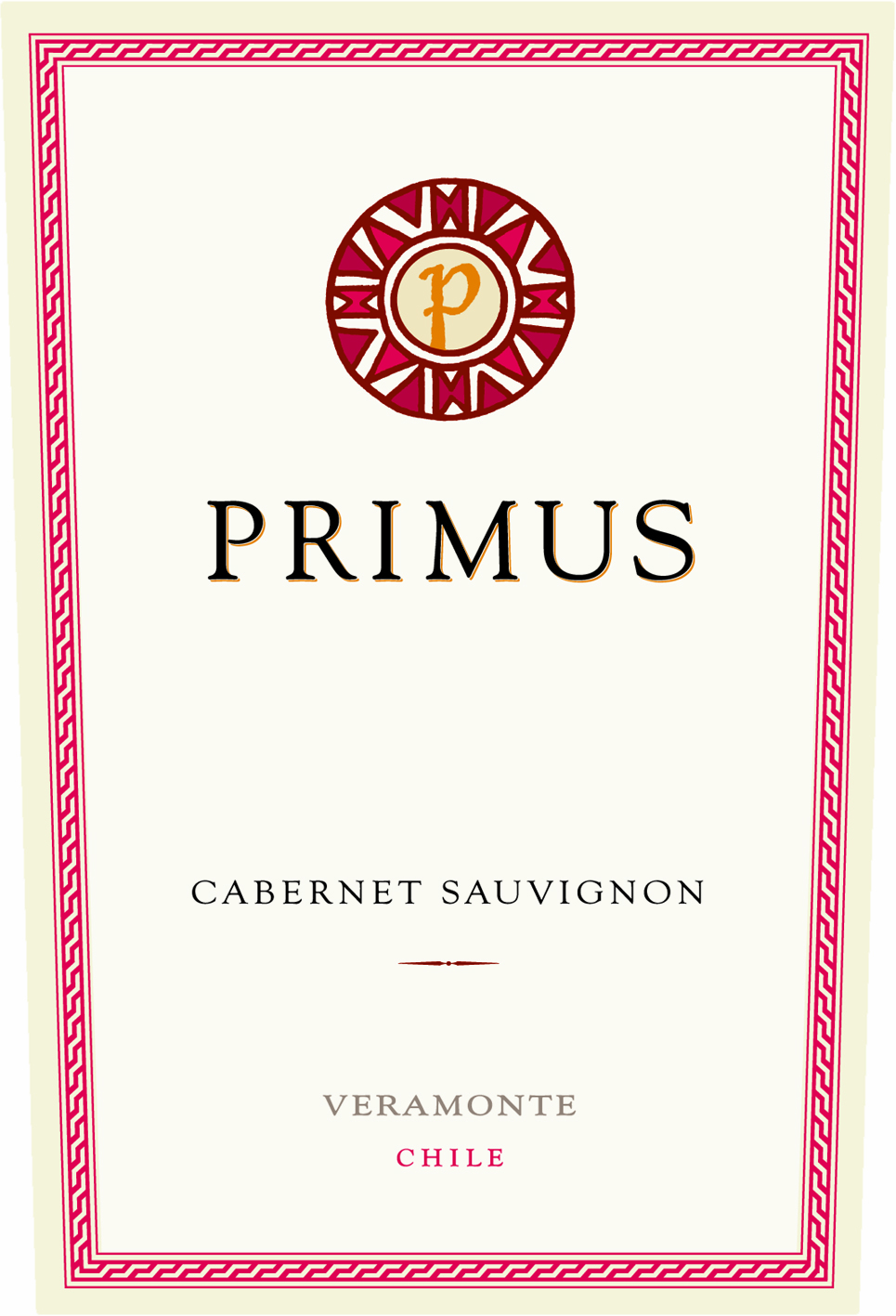 Veramonte has been a consistent source of quality wines from Chile for over 10 years. The two wines in particular that have stood out to me over and over again for quite awhile are the Veramonte Sauvignon Blanc and the Primus Blend. Of late more selections have been added under the Primus umbrella. Today I’ll take a look at the brand new release Cabernet Sauvignon and the latest vintage of The Blend.
The Primus 2009 Cabernet Sauvignon was produced using fruit grown in the Marchigue Vineyards in Colchagua Valley. In addition to Cabernet Sauvignon (92%) this wine also contains a small amount of Syrah (8%). After the fruit was picked the grapes under went two manual sorts to ensure careful bunch selection. Aging was accomplished over 15 months in French oak; 25% of the barrels were new. This wine has a suggested retail price of $19.99.
Veramonte has been a consistent source of quality wines from Chile for over 10 years. The two wines in particular that have stood out to me over and over again for quite awhile are the Veramonte Sauvignon Blanc and the Primus Blend. Of late more selections have been added under the Primus umbrella. Today I’ll take a look at the brand new release Cabernet Sauvignon and the latest vintage of The Blend.
The Primus 2009 Cabernet Sauvignon was produced using fruit grown in the Marchigue Vineyards in Colchagua Valley. In addition to Cabernet Sauvignon (92%) this wine also contains a small amount of Syrah (8%). After the fruit was picked the grapes under went two manual sorts to ensure careful bunch selection. Aging was accomplished over 15 months in French oak; 25% of the barrels were new. This wine has a suggested retail price of $19.99. The Primus 2008 “The Blend” was produced using fruit grown and sourced in Chile’s Colchagua Valley. This offering combines Cabernet Sauvignon (44%), Syrah (21%), Carmenère (19%) and Merlot (15%). Barrel aging was accomplished over 14 months in French oak; 25% of them were new. This wine has a suggested retail price of $19.99.
The Primus 2008 “The Blend” was produced using fruit grown and sourced in Chile’s Colchagua Valley. This offering combines Cabernet Sauvignon (44%), Syrah (21%), Carmenère (19%) and Merlot (15%). Barrel aging was accomplished over 14 months in French oak; 25% of them were new. This wine has a suggested retail price of $19.99. The Frescobaldi 2008 Tenuta Di Castiglioni was produced using fruit sourced at estate vineyards in the Montesportoli section of Tuscany. This estate which sits on 321 acres is between 656 and 820 feet above sea level and the vines have an average of 12 years of age on them. This wine is a blend of Cabernet Sauvignon (50%), Merlot (30%), Cabernet Franc (10%), and Sangiovese (10%). Fermentation took place over 10 days followed by oak aging over twelve months in barriques. The wine is then aged in bottle for two additional months prior to release. This offering has a suggested retail price of $22.99.
Aromas of dry bramble and earth are joined by violets, plums, and cherries in the inviting nose of this 2008 Tuscan blend from
The Frescobaldi 2008 Tenuta Di Castiglioni was produced using fruit sourced at estate vineyards in the Montesportoli section of Tuscany. This estate which sits on 321 acres is between 656 and 820 feet above sea level and the vines have an average of 12 years of age on them. This wine is a blend of Cabernet Sauvignon (50%), Merlot (30%), Cabernet Franc (10%), and Sangiovese (10%). Fermentation took place over 10 days followed by oak aging over twelve months in barriques. The wine is then aged in bottle for two additional months prior to release. This offering has a suggested retail price of $22.99.
Aromas of dry bramble and earth are joined by violets, plums, and cherries in the inviting nose of this 2008 Tuscan blend from 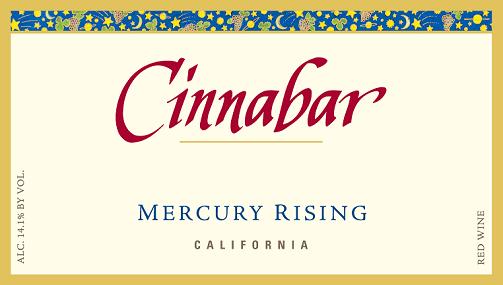 The
The  The Paso Robles region in California has been exploding over the last decade. Both it’s reputation and number of wineries have grown by leaps and bounds. It’s a fascinating region where a wide swath of varietals can thrive. However one of the biggest marks they have been making is with Rhone varietals. Bottled both as stand alone wines and in blends, many grapes known best for theirRhone origins thrive spectacularly in Paso Robles. Today I’ll look at a white blend from
The Paso Robles region in California has been exploding over the last decade. Both it’s reputation and number of wineries have grown by leaps and bounds. It’s a fascinating region where a wide swath of varietals can thrive. However one of the biggest marks they have been making is with Rhone varietals. Bottled both as stand alone wines and in blends, many grapes known best for theirRhone origins thrive spectacularly in Paso Robles. Today I’ll look at a white blend from  One of the things about larger wineries that have lots of acreage under vine is that are often more grapes to work with. This can of course be an advantage on several levels. Primarily it allows the winemaker a wider selection from which to pick fruit for their most important wines. It can sometimes also allow the winemakers to take on projects outside the core releases. Such is the case with Carneros producer
One of the things about larger wineries that have lots of acreage under vine is that are often more grapes to work with. This can of course be an advantage on several levels. Primarily it allows the winemaker a wider selection from which to pick fruit for their most important wines. It can sometimes also allow the winemakers to take on projects outside the core releases. Such is the case with Carneros producer  For the last few years table wines from Portugal have been gaining momentum on our shelves and our collective consciousness. Of course there’s still a ton of excellent Port coming from there too, but everyone knows that, right? Hopefully 2011 will be the year that these dry wines turn the corner and gain even greater acceptance here. The more we learn to appreciate them as a wine drinking country, the more and more we’ll see great ones on our shelves. Today I look at a Reserve release from Quinta do Vallado.
The
For the last few years table wines from Portugal have been gaining momentum on our shelves and our collective consciousness. Of course there’s still a ton of excellent Port coming from there too, but everyone knows that, right? Hopefully 2011 will be the year that these dry wines turn the corner and gain even greater acceptance here. The more we learn to appreciate them as a wine drinking country, the more and more we’ll see great ones on our shelves. Today I look at a Reserve release from Quinta do Vallado.
The  First up is the Tamás Estates 2009 Pinot Grigio. This wine was produced using fruit sourced in California’s Central Coast. Fermentation occurred in stainless steel tanks. It has a suggested retail price of $9.99. Green apple and hints of citrus fill the nose of this Pinot Grigio. Zesty lemon-lime ice is apparent through the palate. Crisp sour fruits, hints of cream and spice make of the finish. This wine is refreshing and showcases firm acidity.
First up is the Tamás Estates 2009 Pinot Grigio. This wine was produced using fruit sourced in California’s Central Coast. Fermentation occurred in stainless steel tanks. It has a suggested retail price of $9.99. Green apple and hints of citrus fill the nose of this Pinot Grigio. Zesty lemon-lime ice is apparent through the palate. Crisp sour fruits, hints of cream and spice make of the finish. This wine is refreshing and showcases firm acidity. While I’ve been drinking Chilean wine for many years I feel reinvigorated to taste more and more of them lately. For several decades now we’ve been able to find lots of value in Chilean Wine on US shelves. But now we’re also seeing greater and greater numbers of wines in all price categories. Prices, styles and quality vary; but the bang for the buck is pretty constant across all tiers. Of course not every wine is great, but there are a lot out there to love. Today I’ll look at a Chilean blend from the Maule Valley.
The Oveja Negra 2008 Lost Barrel was produced using fruit sourced in the Maule Valley of Chile; more specifically from the winery’s San Rafael Vineyard. This blend is a combination of Syrah (40%), Carignan (40%), Carménère (18%), and Petit Verdot (2%). The Carignan vines have 40 years of age on them. The wine was aged in French oak barrels for 12 months. It has a suggested retail price of $25.
While I’ve been drinking Chilean wine for many years I feel reinvigorated to taste more and more of them lately. For several decades now we’ve been able to find lots of value in Chilean Wine on US shelves. But now we’re also seeing greater and greater numbers of wines in all price categories. Prices, styles and quality vary; but the bang for the buck is pretty constant across all tiers. Of course not every wine is great, but there are a lot out there to love. Today I’ll look at a Chilean blend from the Maule Valley.
The Oveja Negra 2008 Lost Barrel was produced using fruit sourced in the Maule Valley of Chile; more specifically from the winery’s San Rafael Vineyard. This blend is a combination of Syrah (40%), Carignan (40%), Carménère (18%), and Petit Verdot (2%). The Carignan vines have 40 years of age on them. The wine was aged in French oak barrels for 12 months. It has a suggested retail price of $25. Whether it’s a $10 bottle or a $75 bottle I’ve found that the wines
Whether it’s a $10 bottle or a $75 bottle I’ve found that the wines 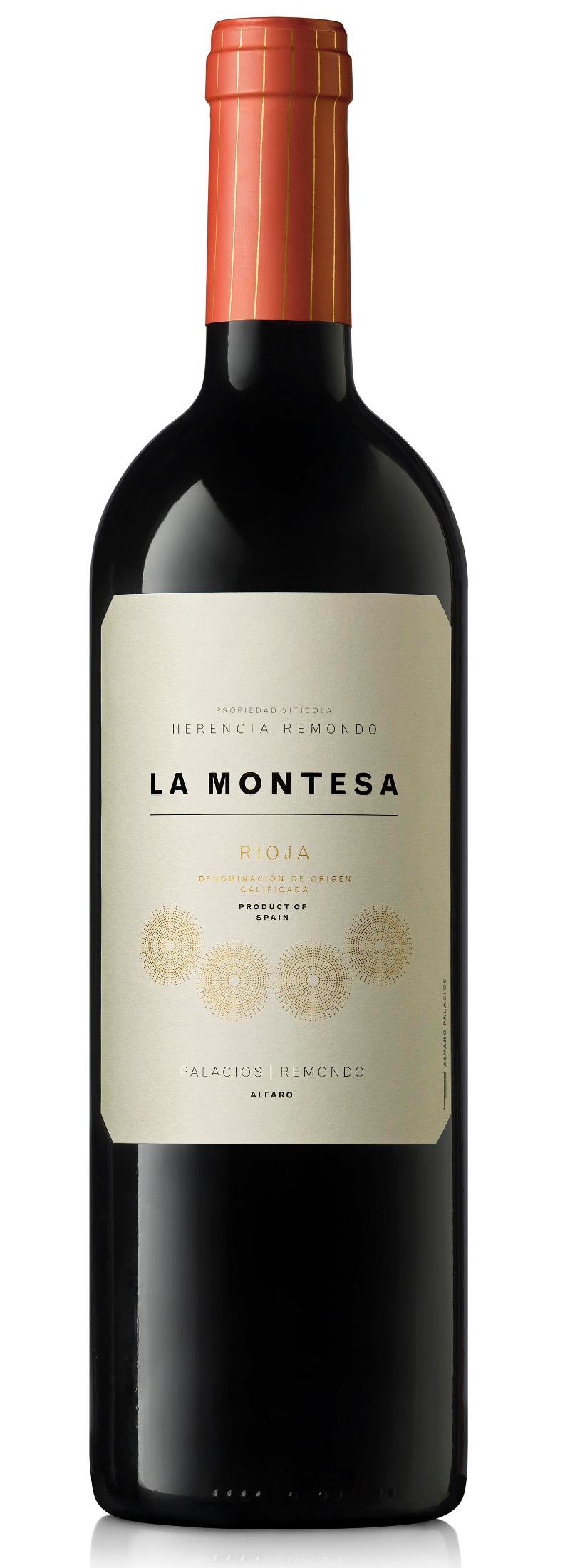 When I first started drinking Spanish wine, most of what I explored was from Rioja. Many of them, Tempranillo based wines. As time has gone on of course I’ve looked to numerous other Spanish wine regions; not to mention a host of other grape varieties. Rioja however retains a special significance for me. Today I’ll look at a new release from
When I first started drinking Spanish wine, most of what I explored was from Rioja. Many of them, Tempranillo based wines. As time has gone on of course I’ve looked to numerous other Spanish wine regions; not to mention a host of other grape varieties. Rioja however retains a special significance for me. Today I’ll look at a new release from  Valdivieso 2005 Eclat
Valdivieso 2005 Eclat De Martino 2006 “Las Cruces” Single Vineyard Old Bush Vines
De Martino 2006 “Las Cruces” Single Vineyard Old Bush Vines Estampa 2008 Gold Assemblage Carmenère
Estampa 2008 Gold Assemblage Carmenère 
 Maquis 2006 Lien
Maquis 2006 Lien Hacienda Araucano 2008 Clos de Lolol
Hacienda Araucano 2008 Clos de Lolol Emiliana 2007 Coyam
Emiliana 2007 Coyam Casas del Bosque 2007 Gran Estate Selection Private Reserve
Casas del Bosque 2007 Gran Estate Selection Private Reserve The
The  Over time I have come to value the food friendliness of wines more and more. I can appreciate wines that stand better on their own, but my need for them has dissipated greatly over time. More often than not when I’m drinking wine, I’m also eating. Well made blends can be some of the best wines to pair with food. Today I’ll look at two Rhone inspired blends from
Over time I have come to value the food friendliness of wines more and more. I can appreciate wines that stand better on their own, but my need for them has dissipated greatly over time. More often than not when I’m drinking wine, I’m also eating. Well made blends can be some of the best wines to pair with food. Today I’ll look at two Rhone inspired blends from  The Wesley Ashley 2007 Intelligent Design Cuvée was produced from fruit sourced on California’s Central Coast. Specifically the grapes were picked from the vineyards of Clos La Chance. This offering is a blend of Carignan (51.5%), Grenache (15%), Cinsault (14%), Petite Sirah (11%), Mourvèdre (4.5%) and Pinot Noir (4%). Each varietal was picked and fermented separately. Barrel aging (also separate) occurred over 18 months in French oak; 36% of the barrels were new. The final blend was assembled prior to bottling. 500 cases of this wine were produced and the suggested retail price is $38.
The Wesley Ashley 2007 Intelligent Design Cuvée was produced from fruit sourced on California’s Central Coast. Specifically the grapes were picked from the vineyards of Clos La Chance. This offering is a blend of Carignan (51.5%), Grenache (15%), Cinsault (14%), Petite Sirah (11%), Mourvèdre (4.5%) and Pinot Noir (4%). Each varietal was picked and fermented separately. Barrel aging (also separate) occurred over 18 months in French oak; 36% of the barrels were new. The final blend was assembled prior to bottling. 500 cases of this wine were produced and the suggested retail price is $38.